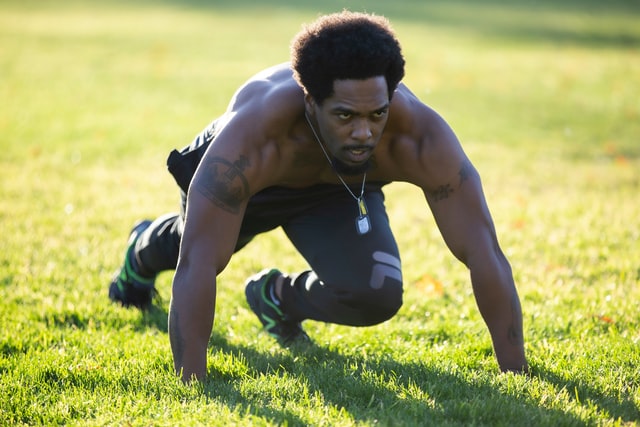8 mistakes related to strength training
These 8 errors related to strength training contribute to the confusion and paralyzation of the development of sports training methodology. When programming a training, a series of objectives and types of training are usually proposed that are not always correct.
In this series of articles we deal with some of the most important concepts of strength training, collecting notes from the recently published book Strength, Speed and Physical and Sports Performance written by renowned researchers Juan José González Badillo and Juan Ribas Serna.
Mistake 1: proposing power training as an objective and sometimes as a phase of a training cycle
This proposal, already discussed in other sections, is wrong because there is no such thing as “power training”. This is so because power is trained in each strength training session. Only improving the applied force (maximum force before the same load) is guaranteed to improve power. In other words, any training that has the effect of improving strength will produce an improvement in speed with the same load, which necessarily means an improvement in power: the same work in less time.
Therefore, it would not make sense either to consider the objective or the “strength-power” phase within a cycle, which is very common in many training proposals. It is not possible to improve power if strength does not improve, and therefore, all training. of strength that produces an improvement in strength performance will mean an improvement in power.
any training that has the effect of improving strength will produce an improvement in speed for the same load, which necessarily means an improvement in power: same work in less time.
Training with the maximum power load can ensure power improvement in the training exercise itself, but only temporarily. In addition, the improvement of power in the training exercise does not guarantee the improvement in the competition exercise. Performance improvement is nothing more than moving the same load at a higher speed, and this necessarily means that power is improved.
Ignorance about this error is so serious that in “scientific” publications it is even considered as a “key finding” that there is a high correlation between strength and power, and especially between changes in strength and power, and therefore This leads to the advice, as a practical application of the “finding”, that it is very important to improve maximum strength if power needs to be improved, something obvious.
Mistake 2: proposing a “transfer phase” in a training cycle
There is no “transfer phase” in a training cycle, because the transfer is intended or sought from the first training to the last, not from a specific day. What has happened if before starting the “transfer phase” the performance has improved? When an exercise is being trained, nothing about it is “transferred”, just said exercise is trained.
There is no “transfer phase” in a training cycle, because the transfer is intended or sought from the first training to the last
It is unreasonable that by the will of the person who schedules a training session on a specific day, a transfer effect begins, at the same time that, also by human will, no transfer has occurred prior to that day. This problem arises from a misinterpretation of the concept of transfer.
Mistake 3: Proposing an “explosive strength phase” in a training cycle There is no such thing as an “explosive strength phase” in a training cycle.
“Explosive force” should be understood as force production in unit time (RFD). Like the transfer, the improvement of the RFD / “explosive force” is intended from the first moment of the cycle until its end. Whenever you try to apply force as quickly as possible (reach maximum speed if there is displacement, maximum slope in the force-time curve, maximum RFD) you train the RFD (“explosive force”), not from of a certain day, nor during a specific period of time “ordered” by whoever schedule the training.
Mistake 4: Proposing a “maximal strength transformation phase” in a training cycle
There is no such thing as a “maximal strength transformation phase” in a training cycle. The transformations (physiological, anatomical, technical…) that give rise to the development etjera transformation, modification, change naming. There would be no training if there were no positive or negative transformation, modification, change (neural, structural, metabolic, enzymatic). The maximum force value reached cannot be “transformed” into anything. What can be transformed is the force-velocity curve, but this is intended from the beginning of the cycle, although sometimes it is not achieved, which would mean that there has been no change in force performance.
Mistake 5: proposing to perform “maximum strength training” at some stage of the cycle
There is no “maximum strength training” but an indeterminate number of workouts for the improvement of maximum strength. Maximal strength can be improved and with any training load (although not all loads work for all subjects). The problem arises from a misinterpretation of the concept of maximum force.
There is no “maximum strength training” but an indeterminate number of workouts to improve maximum strength
Before each load there is a value of maximum force or maximum force applied. All training is necessarily maximum strength. It is not possible to perform other types of | strength training other than for the improvement of maximal strength, regardless of the load with which training is carried out and the load with which maximal strength is measured. The only possible goal when strength training is to improve maximal strength.
Mistake 6: proposing to perform a “speed training, but not maximum strength”
It is not possible to improve speed under a load without improving the force (maximum force) applied to said load. That is to say, a speed training that is not at the same time of maximum strength is not possible. Only improving strength will improve speed.
Error 7: proposing a “ballistic” training against a training with high loads or any training mistakenly considered as “maximal strength”
When speaking of “ballistic” action, we must understand an action in which the effort is made to apply the force as quickly as possible, that is, an action, static or dynamic, in which an attempt is made to reach the maximum slope in the force-curve. time or maximum RFD. If the form of force application meets the indicated requirements, the training could be called “ballistic”, although the use of the term is not necessary nor is the term the most appropriate. Therefore, a “ballistic” training is not the one that is carried out with light loads or performing jumps or throws, but all that in which the RFD is the highest possible, whatever the load and even if the action is static.
a “ballistic” training is not the one that is carried out with light loads or performing jumps or throws, but all that in which the RFD is the highest possible
As has been commented, there is so much contradiction in the literature, that there is talk of both “ballistic training” to refer to light loads and high speed of execution, and “isometric force ballistic training”, in which there would be no displacement and therefore velocity would be equal to zero.
Error 8: proposing a training considered as “resistance training to loss of strength” (the term strength-resistance to force is commonly used)
It does not exist or it should not exist, because all training is “resistance to loss of strength”. Resistance to loss of strength is trained with specific training or exercise, which includes the specific degree (opposition to movement). All training is resistance to loss of strength.
The improvement of the strength before an absolute load necessarily improves the resistance before that load because said load becomes a relative intensity. lower, which means that you will be able to move more times (which is less relevant) or that you will move faster (which is important) for the same time or for the same distance, because the effect of the training on the resistance it is measured by the changes in the average speed during the time or the distance that the effort lasts.
8 most common mistakes related to strength training. 8 most common mistakes related to strength training. 8 most common mistakes related to strength training. 8 most common mistakes related to strength training. 8 most common mistakes related to strength training.







